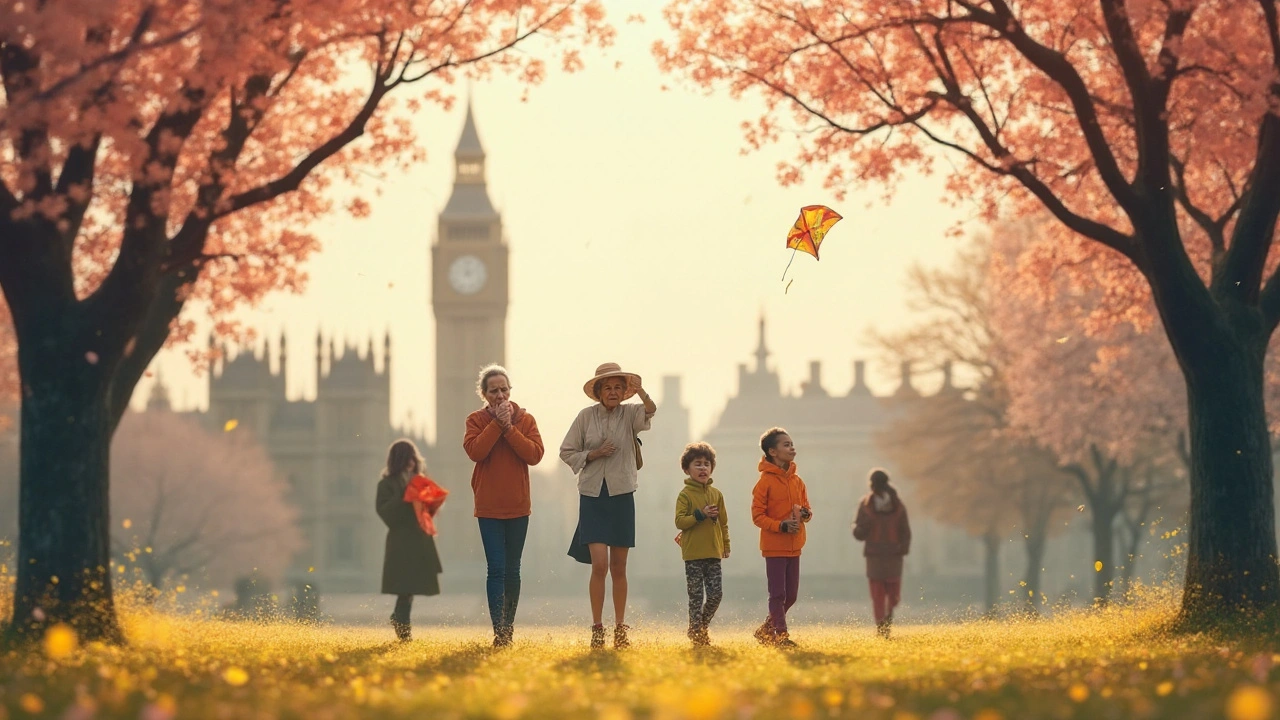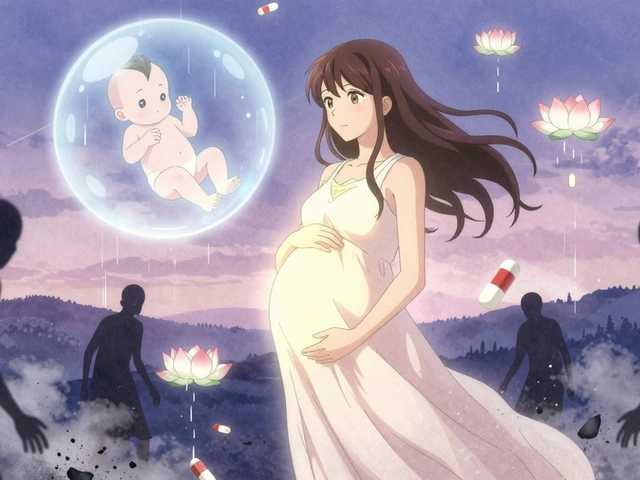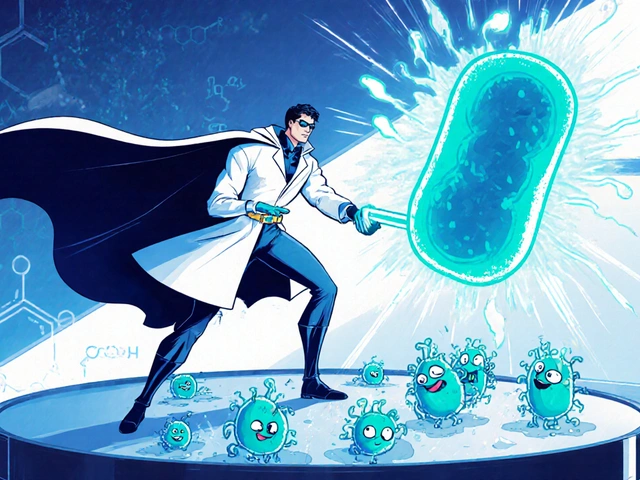TL;DR
- Seasonal allergies are caused by pollen, mold spores, and ragweed that trigger an IgE‑mediated immune response.
- Histamine release from mast cells produces sneezing, itching, runny nose, and watery eyes.
- Symptoms worsen when pollen counts rise, especially in spring and fall.
- Antihistamines, nasal corticosteroids, and allergen immunotherapy are the three most effective treatment classes.
- Climate change is extending pollen seasons, making prevention and proper diagnosis more important than ever.
What Are Seasonal Allergies (also called allergic rhinitis) is an immune‑mediated condition that flares when airborne allergens like pollen circulate in the environment?
When an atopic (allergy‑prone) person inhales an allergen, their immune system mistakenly treats the harmless protein as a threat. This misrecognition launches a cascade that ends with the classic runny‑nose, itchy‑eyes, and sneezing you associate with “hay fever.” The condition is seasonal because the culprits-primarily plants-release pollen at specific times of the year.
How the Body Reacts: From IgE Antibodies specific immune proteins that bind to allergens and flag them for the immune system to Mast Cells immune cells that sit in the nasal lining and release histamine when activated
The reaction follows three steps:
- Sensitization: The first exposure to an allergen triggers B‑cells to produce IgE antibodies. These IgE molecules coat mast cells in the nasal mucosa.
- Re‑exposure: When pollen lands on the nasal lining again, IgE on the mast cells binds the allergen, causing the cells to de‑granulate.
- Mediator Release: De‑granulation dumps histamine, leukotrienes, and cytokines into surrounding tissues, creating inflammation and the hallmark symptoms.
Histamine is the main driver of itching, watery eyes, and sneezing, while cytokines recruit eosinophils that sustain the inflammatory response for hours or days.
Main Triggers
Not all pollen is created equal. The most common seasonal culprits are:
- Tree Pollen produced by oaks, birches, and alders; peaks in early spring
- Grass Pollen from ryegrass, Timothy, and Bermuda; dominates late spring to early summer
- Ragweed Pollen highly allergenic, responsible for fall symptoms
- Mold Spores fungal particles that thrive in damp air, often overlapping with pollen seasons
Geography matters: people living in the Midwest United States report higher ragweed exposure, while coastal regions see more tree pollen.
Typical Symptoms and Why They Vary
Symptoms fall into three categories:
- Upper‑respiratory: Sneezing, nasal congestion, watery discharge.
- Ocular: Itchy, red, watery eyes (allergic conjunctivitis).
- Systemic: Fatigue, mild headache, and sometimes a low‑grade fever.
Severity depends on individual IgE levels, the pollen concentration (often reported as grains per cubic meter), and co‑factors like air pollution or viral infections that irritate the nasal lining.

Why Seasons Matter: Climate Change, Pollen Count, and Air Quality
Recent data from the National Aerobiology Network show that average pollen seasons have lengthened by 20% over the past two decades. Warmer winters cause trees to leaf earlier, extending exposure. In addition, higher CO₂ levels boost pollen production per plant, meaning even the same number of trees release more allergenic particles.
Air quality compounds the problem. Particulate matter (PM2.5) can carry pollen deeper into the lungs, worsening both allergy and asthma symptoms. The synergy between pollutants and allergens is a key reason why urban dwellers often experience more intense flare‑ups.
Managing the Itch: Treatment Options Compared
| Treatment | Onset of Relief | Typical Effectiveness | Potential Side Effects |
|---|---|---|---|
| Antihistamines oral or nasal agents that block histamine receptors | 30minutes-2hours | Moderate (50‑70% symptom reduction) | Drowsiness (first‑gen), dry mouth, rare cardiac effects |
| Nasal Corticosteroids sprays that reduce inflammation in the nasal passages | 12-24hours (full effect 1‑2weeks) | High (70‑90% reduction) | Nasal irritation, occasional nosebleeds |
| Allergen Immunotherapy gradual exposure to increasing allergen doses to reshape immune response | Months to see benefit | Very high (up to 80% long‑term improvement) | Local swelling, rare systemic reactions |
Choosing the right approach depends on symptom severity, lifestyle, and how quickly relief is needed. Many clinicians start with a daily nasal corticosteroid for persistent congestion and add a non‑sedating antihistamine for breakthrough sneezing. Immunotherapy is reserved for patients with moderate to severe disease who want a long‑term solution.
Practical Prevention Tips
- Check daily Pollen Count the measured concentration of airborne pollen grains per cubic meter on weather apps; stay indoors when counts exceed 50 grains/m³.
- Keep windows closed and use HEPA filters in bedroom air circulators.
- Shower and change clothes after outdoor activities to rinse off pollen.
- Consider a nasal irrigation with saline solution twice daily during peak season.
Emerging Research and Future Directions
Scientists are exploring biologics that target specific cytokines (e.g., anti‑IL‑4/IL‑13 antibodies) for severe allergic rhinitis, mimicking the success seen in asthma treatment. Gene‑editing approaches aim to reduce IgE production, though they remain experimental.
From a public‑health standpoint, monitoring climate‑driven shifts in pollen calendars helps physicians anticipate new regional allergens. Urban planning that incorporates low‑pollen plant species is another proactive strategy gaining traction.
Related Concepts and Next Steps
Seasonal allergies don’t exist in isolation. They often coexist with Asthma a chronic airway disease that can be triggered by the same allergens, and with atopic dermatitis (eczema). Understanding the “allergy march” - the typical progression from eczema in infancy to rhinitis and finally asthma - can guide early interventions.
If you’ve identified the trigger but still suffer, the logical next topics to explore are:
- “How to Interpret a Skin Prick Test Result”
- “Choosing the Right OTC Antihistamine for Your Lifestyle”
- “What to Expect During Allergen Immunotherapy Sessions”

Frequently Asked Questions
What is the difference between a cold and seasonal allergies?
Colds are caused by viruses and usually come with fever, sore throat, and a lingering cough. Seasonal allergies are immune‑mediated, lack fever, and produce watery eyes, itchy nose, and clear nasal discharge that recurs at the same time each year.
How long does a typical pollen season last?
It varies by region and plant type. Tree pollen can start as early as February and end by May, grass pollen dominates June‑July, and ragweed peaks from August to October. Climate change is lengthening these windows by several weeks.
Can I outgrow seasonal allergies?
Some people experience reduced sensitivity as they age, but many remain allergic for life. Immunotherapy offers a chance to modify the underlying response and achieve long‑term remission.
Are natural remedies like honey or herbal teas effective?
Evidence is mixed. Local honey may contain small amounts of regional pollen, but clinical trials haven’t shown consistent benefit. Certain herbs (e.g., butterbur) have modest efficacy, but they can interact with medications, so talk to a doctor first.
When should I see an allergist?
If OTC meds don’t control symptoms, if you have frequent sinus infections, or if you suspect asthma involvement, schedule an appointment. An allergist can perform skin prick or specific‑IgE testing and discuss immunotherapy options.
Do pets trigger seasonal allergies?
Pets themselves don’t produce pollen, but they can carry it on fur and paws. Regular grooming and keeping pets out of bedrooms can reduce exposure during peak pollen days.






Katey Nelson
25 September, 2025 . 00:20 AM
Seasonal allergies, in their relentless march each spring, remind us that nature insists on keeping us humble. We wake up, eyes watery, and wonder why our bodies have turned a harmless pollen grain into an invader. The immune system, a marvel of evolution, seems to overreact, releasing histamine like a tiny war‑cry in our nasal passages. This biochemical cascade triggers sneezing, itching, and that nagging sensation of a cold that never fully arrives. Yet, the very same mechanisms protect us from genuine threats, making the trade‑off both fascinating and frustrating. Modern science has identified IgE antibodies as the key messengers, tagging allergens for mast cells to unleash their payload. When those mast cells degranulate, they spill not only histamine but also leukotrienes, cytokines, and a host of other mediators that inflame our tissues. The result is the classic triad of sneezing, runny nose, and itchy eyes that we all dread. Climate change adds a new twist, extending pollen seasons by weeks and amplifying pollen production per plant. Higher CO₂ levels act like a fertilizer for pollen, turning a modest bloom into a veritable pollen storm. Urban air quality compounds the problem, as particulate matter carries pollen deeper into our lungs, intensifying both allergy and asthma symptoms. While the medical toolbox offers antihistamines, nasal corticosteroids, and the longer‑term immunotherapy, each comes with its own considerations of onset, efficacy, and side effects. Non‑sedating antihistamines work within an hour, but may leave your mouth dry; corticosteroid sprays take days to build full effect but can reduce inflammation dramatically. Immunotherapy, on the other hand, reshapes the immune response over months, offering hope for lasting remission. Beyond pharmaceuticals, simple behavioral tweaks-checking pollen counts, keeping windows shut, using HEPA filters, and showering after outdoors-can make a measurable difference. Ultimately, understanding the biology empowers us to choose strategies that fit our lifestyle, rather than simply suffering through the seasonal onslaught. 🌿
Joery van Druten
26 September, 2025 . 16:46 PM
For most patients, starting with a daily nasal steroid and adding a non‑sedating antihistamine for breakthrough symptoms provides a balanced approach that tackles both inflammation and histamine release.
Melissa Luisman
28 September, 2025 . 09:11 AM
Stop ignoring the fact that many people rely on cheap over‑the‑counter antihistamines that barely touch the inflammation; you need a proper corticosteroid spray to actually control nasal congestion.
Akhil Khanna
30 September, 2025 . 01:36 AM
i totally get ur point 🤔 but sometimes folks cant afford prescription meds, so they turn to OTC options; maybe suggest low‑cost generic steroids or community clinics? 😊
Zac James
1 October, 2025 . 18:01 PM
It's worth noting that regional pollen calendars differ, so checking local forecasts can help you time your preventive measures more effectively.
Arthur Verdier
3 October, 2025 . 10:27 AM
Oh sure, the pharma giants just want you to stay miserable so they can sell you endless boxes of antihistamines-because nothing says “public health” like a never‑ending subscription to sniffles.
Breanna Mitchell
5 October, 2025 . 02:52 AM
While it's easy to feel cynical, the reality is that many of those medications are genuinely effective when used correctly, and they have helped countless people get through allergy season with minimal disruption.
Alice Witland
6 October, 2025 . 19:17 PM
Interesting how the article pretends pollen is the only villain, ignoring that indoor dust mites are practically the same-just a different shade of annoyance.
Chris Wiseman
8 October, 2025 . 11:42 AM
One could argue that the whole narrative around seasonal allergies is a manufactured crisis designed to keep the public in a perpetual state of discomfort, thereby driving the consumption of ever‑more sophisticated pharmaceutical solutions. Yet, if we peel back the layers of commercial interest, we encounter a genuine physiological response that has been documented for centuries, predating any modern medication. The immune system's hypersensitivity to pollen is an evolutionary relic-perhaps once beneficial in a world where certain plant proteins signaled environmental changes. In today's hyper‑connected world, however, the same response is amplified by pollutants, climate‑induced longer pollen seasons, and a lifestyle that keeps us indoors, exposing us to indoor allergens as well. Moreover, the emphasis on pharmacological interventions often overshadows simple, low‑tech strategies like nasal irrigation, which can be just as effective for many sufferers. Ultimately, the dialogue should shift from “which drug works best” to “how can we redesign our environments and daily habits to minimize exposure in the first place.”
alan garcia petra
10 October, 2025 . 04:08 AM
Give those nasal rinses a try-many folks say the fresh feeling after a saline rinse can cut sneezing in half, and it's a cheap, drug‑free option.
Allan Jovero
11 October, 2025 . 20:33 PM
While the article correctly identifies IgE as the primary antibody class involved, it should be noted that IgG4 plays a significant role in the desensitization process observed during successful allergen immunotherapy.
Andy V
13 October, 2025 . 12:58 PM
Also, the claim that antihistamines work within “30 minutes‑2 hours” overlooks the fact that many second‑generation agents reach peak plasma concentration closer to one hour, not immediately.
Tammie Sinnott
15 October, 2025 . 05:23 AM
Picture this: you step outside on a crisp autumn morning, the leaves just beginning to turn, and suddenly your eyes start to burn like a wildfire-seasonal allergies turn even the most picturesque moments into a drama of endless sneezes.
Michelle Wigdorovitz
16 October, 2025 . 21:48 PM
Ever wonder why some people get hit hard by ragweed while others barely notice it? It probably comes down to individual IgE levels and maybe even genetic factors that we're still figuring out.
Arianne Gatchalian
18 October, 2025 . 14:14 PM
I totally understand the frustration of waking up with a blocked nose every spring; a gentle reminder to keep your bedroom windows closed at night can make a big difference.
Matthew Marshall
20 October, 2025 . 06:39 AM
Seasonal allergies suck.
Lexi Benson
21 October, 2025 . 23:04 PM
Sure, because nothing says “I love nature” like a constant flood of pollen tearing up your eyes 🙄😊.
Vera REA
23 October, 2025 . 15:29 PM
According to recent aerobiology data, the average oak pollen season now begins approximately ten days earlier than it did two decades ago.
John Moore
25 October, 2025 . 07:55 AM
If you haven't tried a HEPA filter in your bedroom yet, you might be missing out on one of the simplest ways to cut down nightly pollen exposure.
Adam Craddock
26 October, 2025 . 23:20 PM
Could you elaborate on the mechanisms by which anti‑IL‑4/IL‑13 biologics may offer benefits for patients with severe allergic rhinitis?